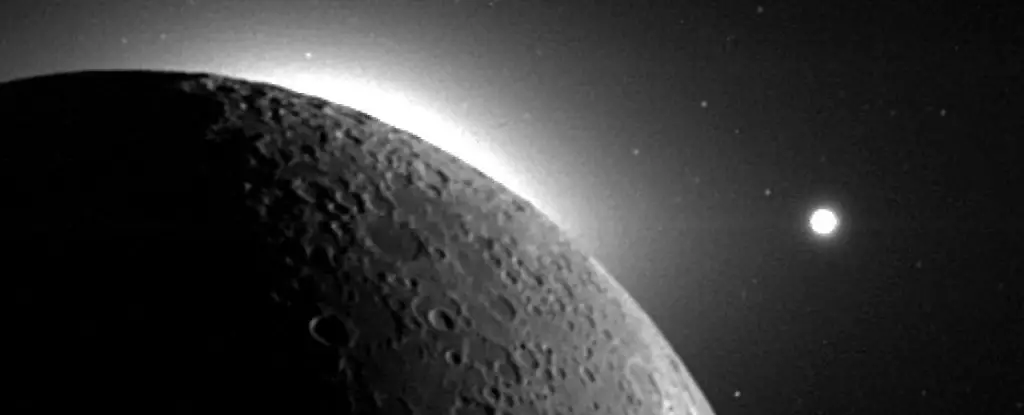The Earth-Moon system is a fascinating anomaly in our Solar System. Unlike other planets, which either boast an array of moons or are entirely devoid of them, the singularity of our planet’s relationship with its Moon stands out remarkably. This intimacy prompts vital inquiries into the origins and evolution of both celestial bodies. For decades, scientists have debated the circumstances surrounding the Moon’s formation. Leading theories suggest that our Moon either originated alongside Earth as its sibling or was birthed from a colossal impact event — commonly referred to as the Giant Impact Hypothesis. However, fresh research is prompting scientists to reconsider the narrative, raising the possibility that our Moon may have originated elsewhere in the Solar System before being captured by Earth’s gravitational pull.
Recent studies from Pennsylvania State University’s astronomers, Darren Williams and Michael Zugger, lend credence to a radical new hypothesis: the Earth-Moon relationship may have arisen from a case of gravitational entanglement rather than a direct birth process. Their calculations reveal that the gravitational capture of celestial objects may be feasible for rocky planets like Earth, thereby offering an alternate explanation for our solar neighbor’s origins. This groundbreaking assertion invites a reevaluation of long-held beliefs about planetary formation and the relationships between celestial bodies.
One of the strongest arguments supporting the traditional formation theories is the striking similarity in the mineral compositions of Earth and its Moon. Studies have shown that both bodies possess nearly identical physical and chemical characteristics. The prevailing explanation for this alignment is the Giant Impact Hypothesis, which posits that a massive object collided with the young Earth, resulting in debris that eventually coalesced to form the Moon. However, alternative scenarios also exist. The Moon might have formed from the same dust cloud surrounding the Sun as Earth or from a vaporized planetary body, referred to as a synestia.
Despite these feasibility studies on gravitational capture, a closer inspection into the mineral and isotopic similarities raises questions. Could the capture scenario truly account for the uniformity found in both bodies’ compositions? Critics of the capture theory argue that while a celestial object’s orbit may change over time, the extensive isotopic and mineralogical data available currently favor a shared origin over one derived from capture.
Exploring gravitational dynamics provides a new perspective on how celestial systems can interact. The concept of binary capture suggests that if two celestial bodies are gravitationally bonded, the approach of a third body can lead to a dynamic shift. If correctly aligned, this third body can capture one of the original pair, leading to a redefined orbit. Williams and Zugger’s research points to the plausibility of Earth having captured a Moon-sized object through such means, although questions remain on the consistency of this theory with existing data.
Neptune’s moon Triton serves as a case study in this paradigm. The moon’s retrograde orbit and unusual trajectory imply it may have been snatched from the Kuiper Belt, a celestial performance that hints at the complexities of gravitational interactions within our Solar System. Yet, while binary capture is fascinating, it remains to be seen if the same principles hold true for the formation of the Earth-Moon system.
What is ultimately at stake here goes beyond uncovering the origins of the Earth-Moon relationship. The implications of this research reach far into the cosmos, promising to enhance our understanding of planetary systems in general. As scientists work to unravel these cosmic puzzles, they also pave the way for future explorations into exoplanets. Understanding the intricacies of how celestial bodies can form or capture moons may enable astronomers to identify habitable worlds orbiting stars in other galaxies.
As Williams put it succinctly, “No one knows how the Moon was formed. For the last four decades, we have had one possibility for how it got there. Now, we have two.” The evolution of this question mirrors humanity’s broader quest to comprehend our place in the cosmos, steering us toward eventual discoveries that could redefine our understanding of life as we search for similar relationships and environments beyond our Solar System.
The modern debate over the Moon’s origins is emblematic of a continually evolving scientific landscape. With each discovery, we are sketching a clearer image of our celestial neighborhood while simultaneously igniting our imagination for what lies beyond. The answers — like the Moon itself — remain shrouded in mystery, awaiting further scrutiny and exploration.


Leave a Reply